Chapter 3, Part 2
On the Malabar Coast in the southwestern corner of the Indian subcontinent lie old trading ports which served as the main gateways for ancient traders and explorers, from China to Persia, from Arabia to Europe. Calicut, Quilon and Cochin – modern-day Kozhikode, Kollam and Kochi – were visited by some of the world’s greatest explorers including Niccolò de’ Conti (a Venetian merchant who chronicled his visit to Vijayanagara during its heyday), Zheng He (the great admiral of the Ming dynasty), and Ibn Battuta (a 14th-century Moroccan traveler and scholar who explored Africa, the Middle East, South Asia and the Far East).
However in the year 1453 a major event unfolded in the crossroads of the Old World, marking the beginning of a new era. For centuries Constantinople’s bazaars were teeming with traders from different nations, kingdoms and empires, selling and purchasing items from ceramics to spices. Pepper, cinnamon, clove and nutmeg were some of the spices procured from faraway places in Southeast and South Asia to be sold to the Europeans. But the fall of the city to the Ottoman Empire practically made the access to the spice market increasingly difficult for the European merchants.
This disruption of commodity and spice supply to the Europeans triggered an upsurge in the number of state-sponsored sea expeditions, notably by the Portuguese and the Spaniards, to find direct sea routes to India and the Spice Islands. More than three decades after the fall of Constantinople, Bartolomeu Dias from Portugal successfully sailed to the southernmost point of Africa in 1488, paving the way for later explorers to discover sea routes to India. Ten years later Vasco da Gama reached Calicut, becoming the first European to travel by sea to India. Only three years after da Gama’s arrival, another Portuguese explorer by the name of Pedro Álvares Cabral discovered Brazil, and continued his journey eastward to reach the Malabar coast.
In the coastal town of Cochin, Cabral forged a close relation with the local king resulting in an agreement which allowed the Portuguese to build a factory and establish a settlement in the town – the first European settlement in the Indian subcontinent. In the early decades of Portuguese presence in India, Cochin was the seat of the colonial administration before it moved north to Goa following the fall of the latter to the Portuguese.
Despite losing its status as a colonial capital, Cochin continued to flourish as a major trading port in the Indian Ocean. One of the most well-known icons of modern-day Kochi – as what the city is now officially called – is the Chinese fishing nets which dot the shores of Fort Kochi, the city’s historical center, as well as other coastal areas in the state of Kerala. Some suggest that the nets made their way into India by way of Zheng He’s expeditions as the Chinese admiral frequented Cochin in his multiple sea voyages. However other believe that it was the Portuguese who introduced the nets to the Malabar coast from Macau, another Portuguese colonial post in Asia.
For around a century the Portuguese was the dominant European power in Asia, controlling much of the spice trade between the continent and Europe, and bringing immense wealth home. This had sparked the interest of other European powers to send their own sea expeditions to Asia and beyond in hope for reaping even bigger fortunes. Over the following centuries the British and the Dutch, and to some extent the French, competed fiercely to exert control not only over the sea trade routes between Asia and Europe, but also the political landscape of vast swathes of land and sprawling archipelago thousands of kilometers away from home.
Decades of relentless confrontations by the British and Dutch forces eventually eclipsed Portuguese influence in Asia. By the late 17th century, Portuguese colonial realm in India was mostly concentrated in Goa and a few small pockets of land along the coasts of the subcontinent. The Dutch controlled Cochin until 1814 when it was exchanged with the island of Bangka to the east of Sumatra, at that time under British control. It was one of several exchanges which allowed both European powers to consolidate their colonial possessions to eventually form a contiguous empire that stretched from much of present-day Afghanistan, Pakistan, India, Bangladesh, Sri Lanka and Myanmar for the British, and more than 13,000 islands around the equator between Australia and Mainland Asia (which now make modern-day Indonesia) for the Dutch.
Today Kochi is more famous as a starting point to explore the renowned scenic backwaters of Kerala. But its historical significance is palpable chiefly in Fort Kochi and Mattancherry, home to the oldest synagogue in the Commonwealth, one of eight basilicas in India, the oldest church in the country, as well as a Dutch Palace which has been turned into a museum.
Having lived under colonial rules for centuries does not diminish local cultures and custom. Kathakali, an exquisite form of performing arts unique to Kerala, in fact flourished when India was still colonized by the Europeans and has now become one of Kochi’s cultural icons. Animated facial expressions, deft body gestures, exuberant and colorful costumes, energetic beats of maddalam and chenda (Keralan percussion instruments) and a forlorn lament made Kathakali a very atmospheric, profound and moving performance. All done without the actors uttering a single word. The night’s show was inspired by a scene in Mahabharata, one of the main Hindu epics, where Draupadi – the wife of the Pandavas – was harassed by Kichaka and later on rescued by Bhima, one of the Pandavas. In a more melancholic note, the performance also resonated with Kochi itself: loud, playful, frustrating, cheerful and amusing.
Click here for the full list of stories from the Spice Odyssey series.
Writer’s note: An earlier version of this post referred to Kichaka as Dushasana.
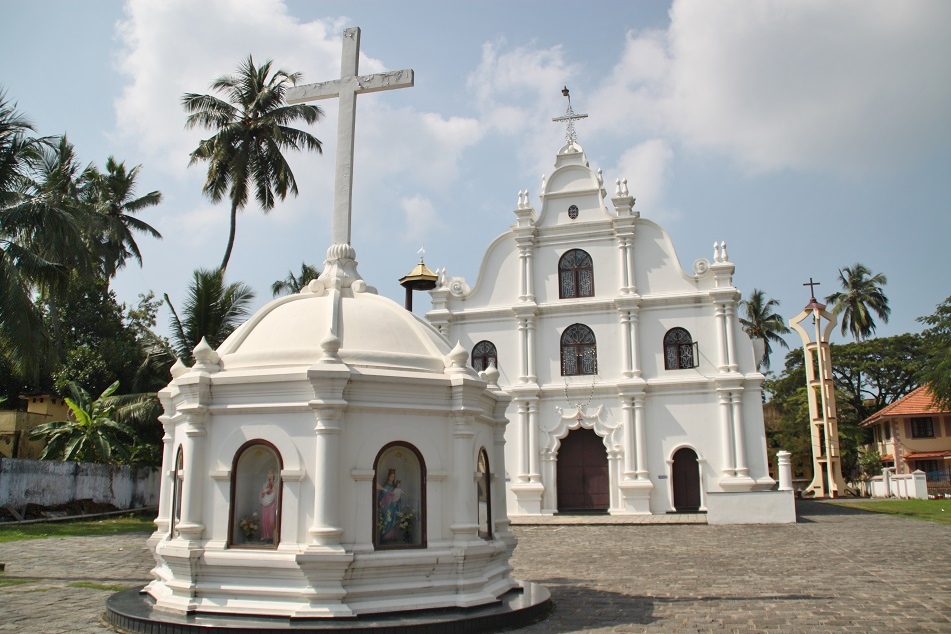
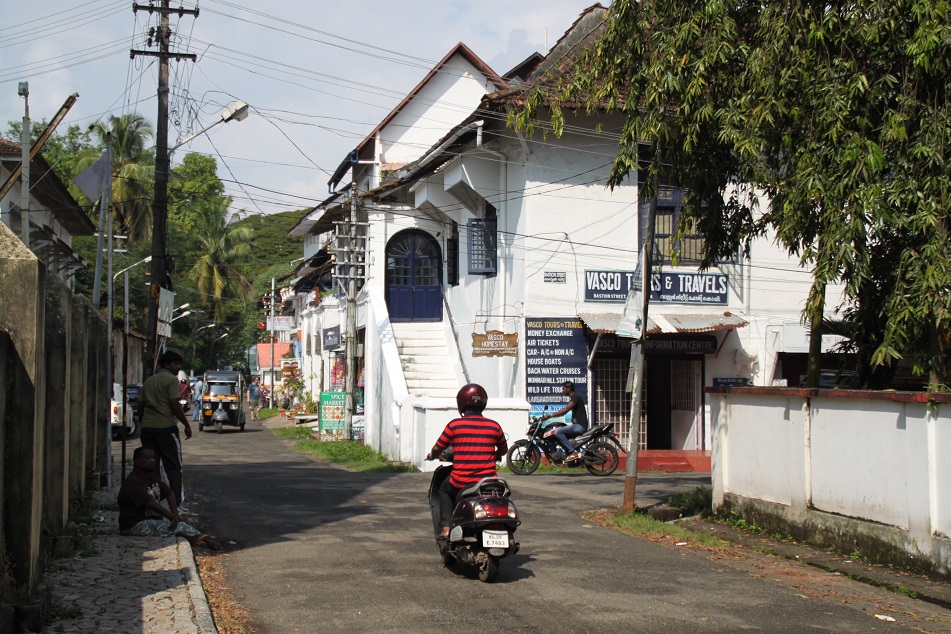

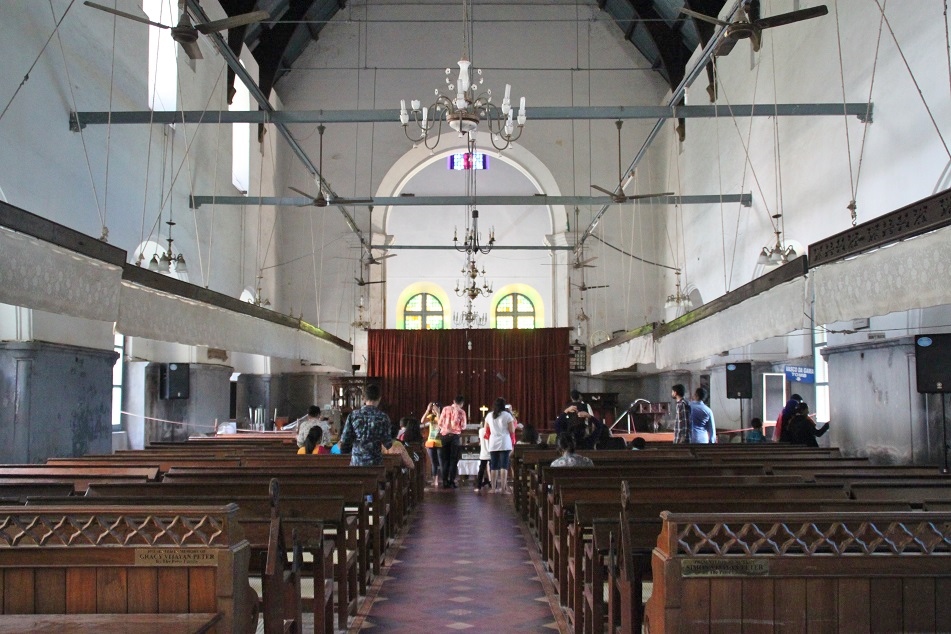
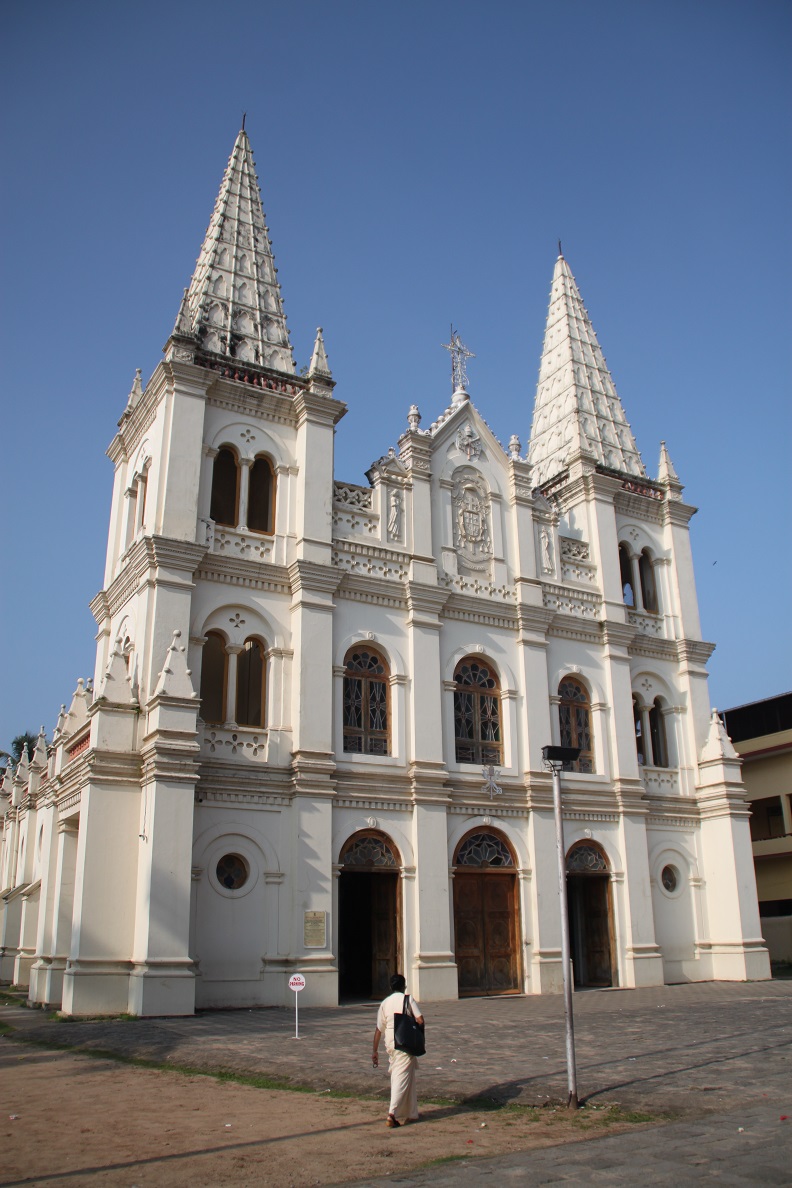

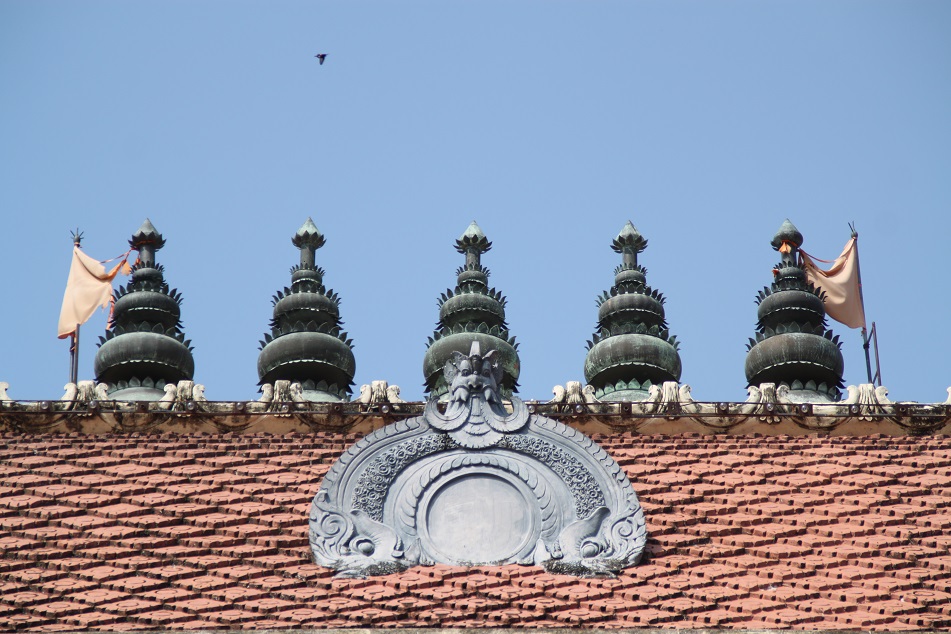

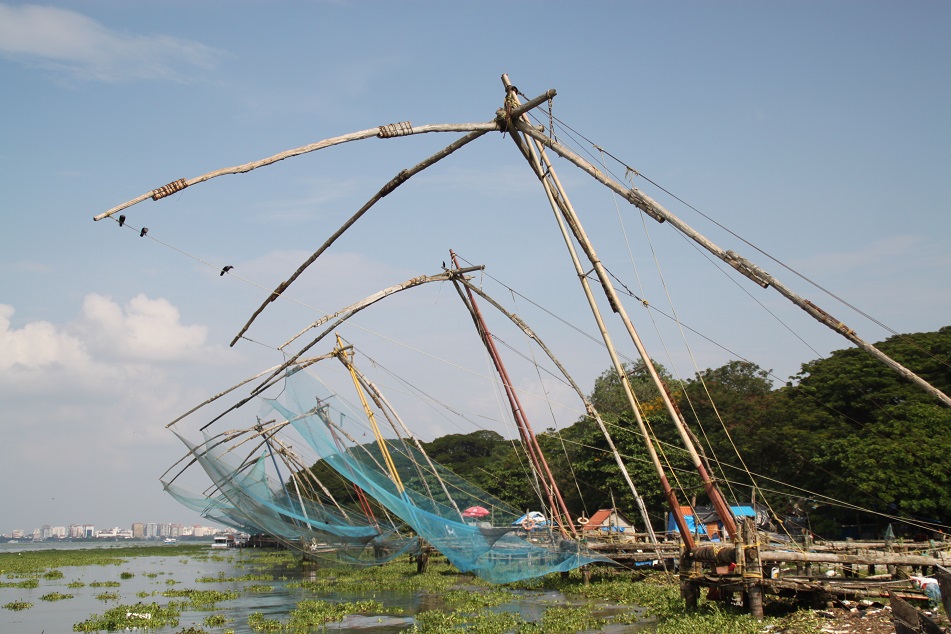
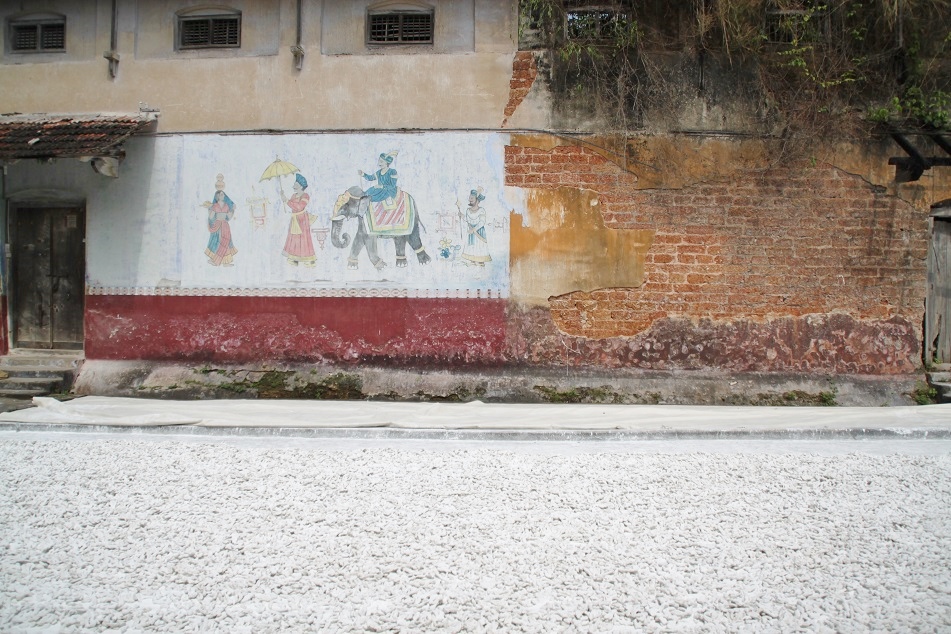

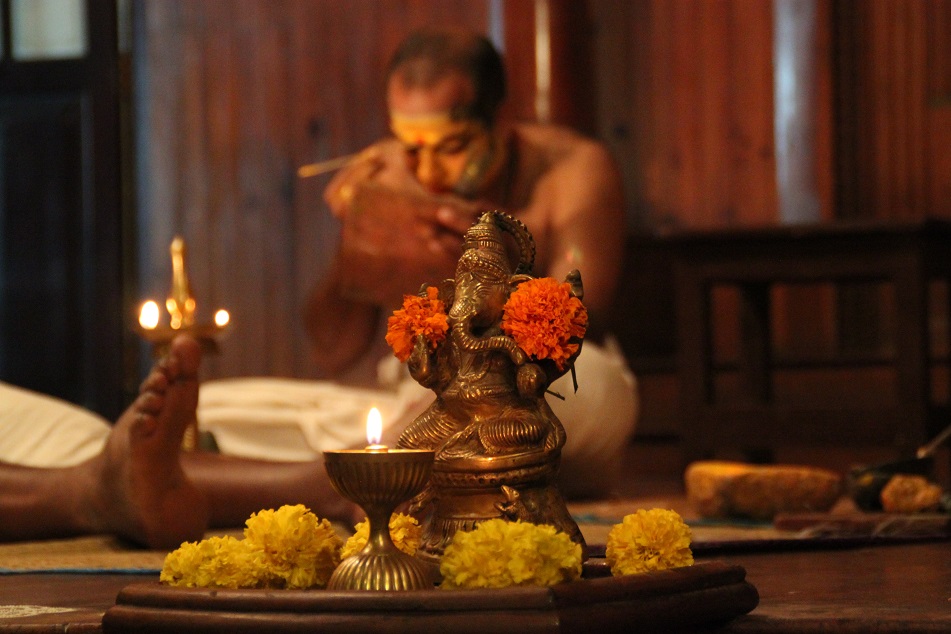
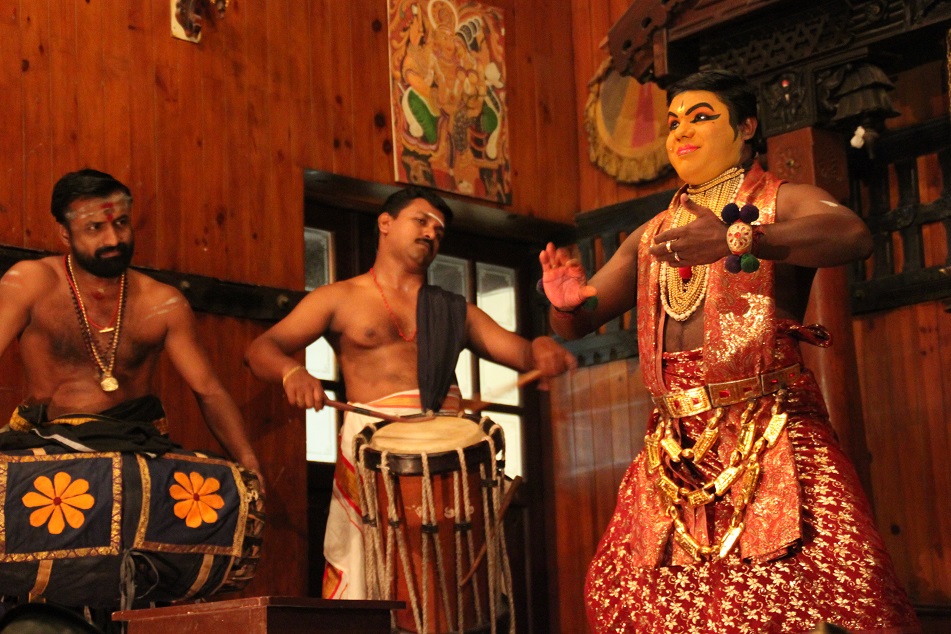
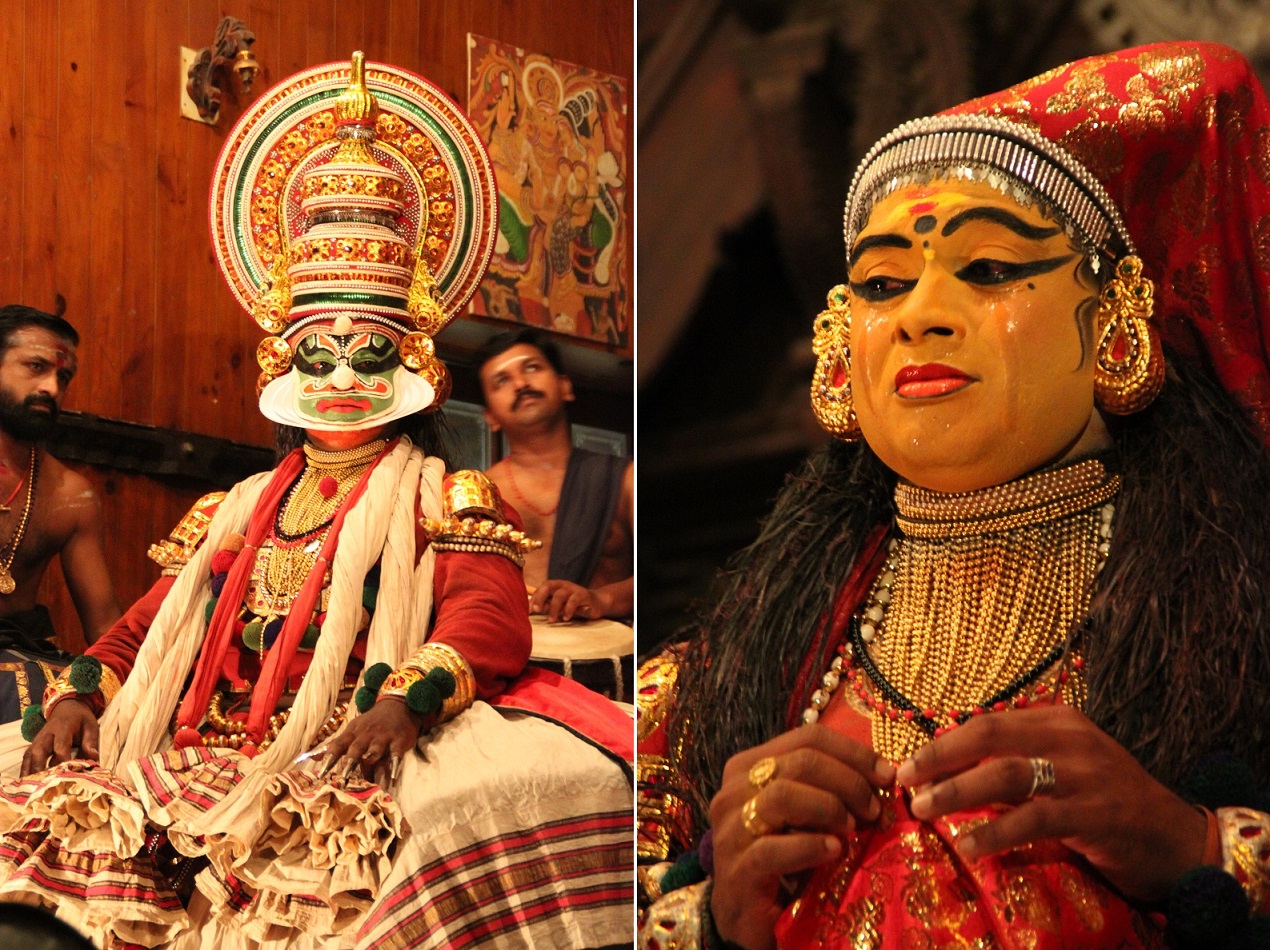
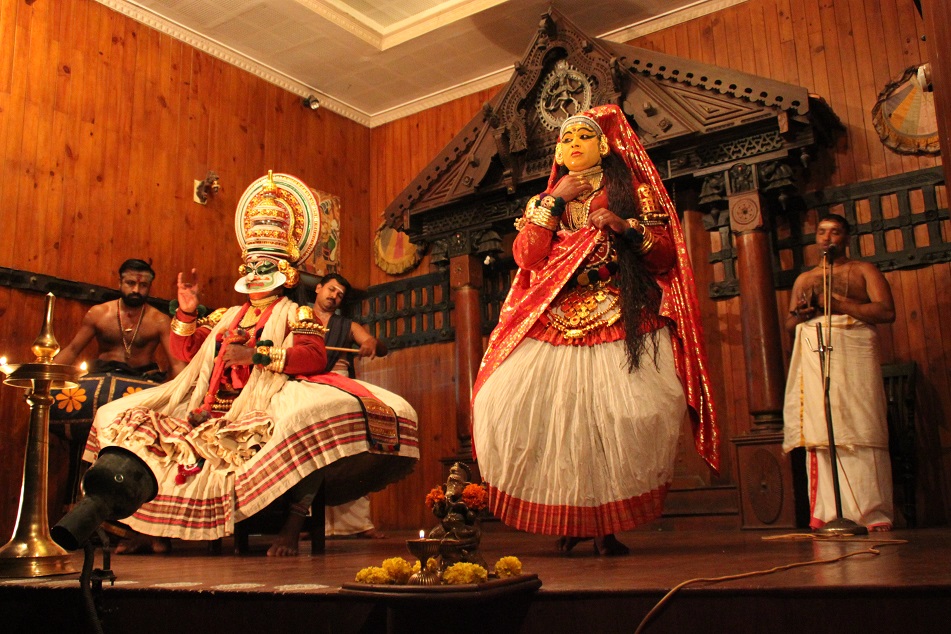
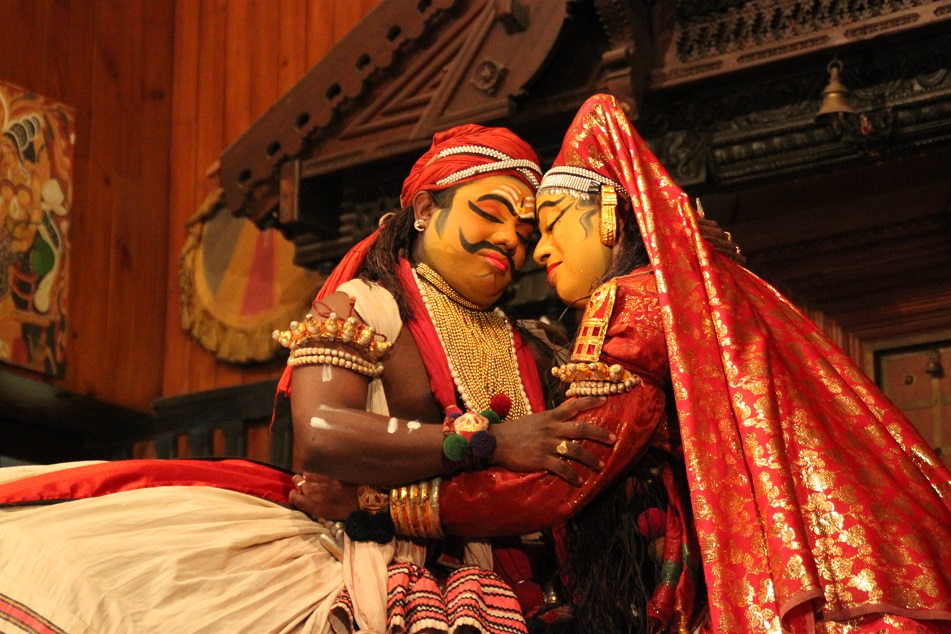
Ohh!! Wow, extraordinary presentation😊👍
LikeLike
Thank you, Vivek. Glad you enjoyed this post.
LikeLike
Reblogged this on Incredible Pie and commented:
Get!! Set!! Travel!! The best of Kochi blended perfectly.. Have a look!! I am sure you’ll be convinced enough to book your tickets today!!!😊👍
LikeLiked by 1 person
Your knowledge is extensive, your photos wonderful! I learn so much.
LikeLike
Thank you, Adelheid. My travels always teach me so much, not only about the people but also the history of places I visit.
LikeLike
Very informative. Didn’t realise Battuta made it all the way to South India. Certainly highlights European greed.
LikeLike
Once you gain profits, you want more and more, and that was how the Europeans — notably the Dutch and the British — reaped immense wealth from their global empires, especially between the 17th and the 19th centuries. As for Ibn Battuta, his accounts on China made James chuckle once: “The Chinese infidels eat the meat of pigs and dogs and sell it in the bazaars.” More than seven centuries later the Chinese still love their pork so dearly. 🙂 Thanks for reading, Mallee.
LikeLiked by 1 person
Your photo of “a solemn moment of preparation” is exquisite. It’s so fascinating that spices inspired so much travel and discovery. How fun to imagine what the world must have been like back then. Thanks for a beautiful post, Bama!
LikeLike
Thanks Kelly! Human’s desire to scour the world and make huge profits were once fueled by spice, now it is fueled by oil, and some say in the future it might be water we will be fighting for. Hopefully it will be peace we’ll all be seeking because it is one that is invaluable.
LikeLiked by 1 person
Wonderful photos of the performers Bama, and a fascinating history lesson. I agree with Kelly – the solemn moment photo is definitely a winner!
Alison
LikeLike
Thank you, Alison. James and I were glad that we watched Kathakali on our last night in Kochi as it wrapped our short stay in the city on a positive note.
LikeLiked by 1 person
Aku suka penjelasan sejarah panjang Kochi, Kerala dan sekitarnya yg dirimu tulis di sini. Keren Bam.
Btw dengan menukar Kochi ke Bangka, Belanda lebih untung gak ya? Mengingat Bangka lebih kaya bahan tambang daripada rempah-rempah yang kala itu menjadi incaran.
Trus kalau Vasco da Gama pernah di kubur di situ. Berarti sekarang jenazah nya sudah dipindah ya?
Dan aku penasaran banget sama Kathakali. Aku pikir itu mereka pakai topeng lho, ternyata itu riasan yaaa. Wuih mahal modal dandannya hahahaha ….
LikeLike
Makasih Bart. Hmm, soal tukar guling jadinya lebih menguntungkan atau nggak aku harus riset lagi sih. Tapi yang pasti tuker-tukeran wilayah jajahan antara Belanda dengan Inggris itu beberapa kali terjadi. Contoh lainnya adalah Bengkulu (yang dulu jajahannya Inggris) dituker sama Malaka (dulu jajahannya Belanda). Juga Pulau Run di Kepualauan Banda (dulu punyanya Inggris) dituker sama New Amsterdam (punyanya Belanda) yang sekarang jadi Manhattan. Kalo dipikir-pikir seenak jidat ya nuker-nuker wilayah jajahan, hehe..
Iya Bart, jenazah Vasco da Gama dibawa pulang ke Portugal buat dimakamkan di sana.
Kathakali itu keren pake banget! Ekspresi mukanya bener-bener bikin ceritanya hidup, padahal gak ada dialog sama sekali. Dan emang sih, make up-nya tebel banget, terutama yang jadi Dursanana sama Drupadi.
LikeLiked by 1 person
Aku jadi mikir seandainya gak dituker gimana ya nasibnya sekarang?
Itu kok bisa motret pas mereka make up an. Dapat akses ke backstage ya Bam?
LikeLike
Mungkin batas-batas negara yang kita kenal saat ini bakal terlihat jauh berbeda. Itu mereka make up-nya di atas panggung kok Bart, sekitar satu jam sebelum mulai dan pencahayaannya juga masih agak diredupin. Yang susah itu ngatur settingan kamera sampe dapet yang pas.
LikeLiked by 1 person
Oooo gitu, mungkin sengaja ya biar bisa diliput juga.
LikeLike
Yoi. Mungkin karena banyak yang pada pengen motret jadi akhirnya mereka make up di panggung sekalian.
LikeLike
Very informative post. The preparation must be very long for all these performers but the result is amazing. I wish I could have heard the music.
LikeLike
Thanks! I think it took one hour for make up, but as you can see the result is marvelous. I found a video on YouTube which will give an idea of the ambiance of the performace — it was of a different act though: https://www.youtube.com/watch?v=lOaOYfA-FL8
LikeLiked by 1 person
Thanks for the link, I will have a look !
LikeLiked by 1 person
Vasco da Gama – a name conjuring up all my elementary school dreams of world travel, a man filled with wanderlust at a time when travel was truly travail … I think I’d be happy just seeing the places associated with him in this place! Of course, all the history is fascinating, but I always tend to focus on someone or something small, and here he is the man! (I do have to add that the Chinese fishing nets photo is exquisite!)
LikeLike
Exactly! And for me, it was how some of classmates called me: Vasco da Bama. 🙂 Reading about his achievements and visiting where he used to live, and where he was once buried was really an invaluable experience. Have you been to India? If you haven’t, maybe you’d want to focus on the south and retrace da Gama’s footsteps. Thanks for reading, Lex.
LikeLiked by 1 person
Ha – great nickname! I have not been to India and I’d love to follow some of the old trade routes and adventurers’ paths – such an enjoyable way to make history come alive.
LikeLike
I would not recommend India to everyone, but I know it’s a place you — as a seasoned traveler — would find fascinating to explore.
LikeLiked by 1 person
Yes, I very, very much want to go! 🙂
LikeLike
I was here last week! Fantastic coverage of the history of this lovely city! We loved every moment here.
LikeLike
Kathakali was arguably one of the things I enjoyed the most in Kochi. I’m really glad I went!
LikeLike
We loved Kochi, when we were in India last. It was so full of surprises…! And definitely one of the highlighs was the Kathkali dancers, as well as the drum meditations of the “morning ragas” at the same cultural center as the Kathkali, in the mornings.
The spice market area captivated us as well… Especially being Jewish ourselves and finding the synagogue in the Jewish quarters of the spice market and learning about it’s fascinating extensive history…
Thanks for bringing back such great memories of one of our favorite places in India! It made me go back to our post on our blog to reread it 🙂
Peta
LikeLike
I didn’t watch the morning ragas, but from your photos it looks equally interesting. The first time I visited a synagogue was in Yangon, and the one in Kochi was my second. It was very interesting as well as intriguing because in Indonesia there is currently only one synagogue left which is located in North Sulawesi, pretty far from where I live.
Thanks for reading and sharing your thoughts on Kochi, Peta!
LikeLike
The connectedness of the world is powerful, and I like the role the desire spices has in developing trade. Makes me think of the stories centuries ago when salt was such a valued item, and often only the upper class had access to something that today is so prevalent. The last series of photos are tremendous, a feeling of the Kathakali performance ~ wonderful post Bama.
LikeLike
Salt, silk and tea were some of the commodities which spurred trade among far-flung communities in the ancient time along with spices. Trade has really changed the world profoundly, and even today it is often behind some of the most contested issues among modern nations. You would love Kathakali — the energy was palpable, as well as the emotions. I can imagine beautiful shots you’d take out of the performance. Thanks Randall!
LikeLike
It’s impressive how you know the details of the history. Really, you should publish your travel knowledge as a book.
LikeLike
The Internet really helped me with the fact-checking, especially if there are conflicting accounts about a particular subject. Thanks for the encouragement, Indah. Really appreciate it!
LikeLike
WOW! I haven’t read such a comprehensive post on Kochi. You have covered it all in detail! Love the photos!
LikeLike
Much appreciated! I haven’t mentioned about the food though, which was one of the highlights of my stay in Kochi. I will save the post on Keralan dishes for the final chapter of this series.
LikeLiked by 1 person
Pingback: Perceiving Kerala | What an Amazing World!
Beautifully written. Did you visit the capital city during your trip?
LikeLike
Thanks Sreejith. Unfortunately I didn’t have enough time to visit Trivandrum. Maybe next time.
LikeLike
Ya ampun itu bukan topeng? Wow.. keren sekali dandannya. Bagaimana bisa sampai dia mengeluarkan airmatanya tanpa melunturkan dandanannya? Hebat sekali…
BTW, saya baru tau dalam peristiwa penistaan itu ada pertolongan dari Bima, setau saya Bima pun tak bisa berbuat apa-apa karena dia juga dijadikan taruhan. Banyak pendapat mengatakan Draupadi ditolong langsung oleh Tuhan sendiri. hihihihi… Tapi di lain pihak memang ada scene ketika Bima menolong Draupadi dari percobaan penistaan lain yaitu dari Kichaka saat penyamaran Draupadi menjadi sairandri di kerajaan matsya. Saat itu akhirnya Bima dapat menghabisi Kichaka dan Arjuna (as Brihanala) memainkan gendangnya dengan keras untuk mengelabui suara perkelahian Bima. hihihi… mungkin saya kebanyakan nonton film
LikeLike
Bukan mbak, jadi kalau nonton Kathakali jangan cubit muka para pemainnya ya buat buktiin kalo itu memang make up. 🙂 Nah untuk air mata, mereka pakai semacam biji-bijian yang bisa membuat mata perih, sehingga mata menjadi merah dan berair. Agak-agak serem sih memang, tapi mereka sudah terbiasa dengan itu. Mengenai versi cerita yang Mbak Riyanti sebutkan, mungkin yang di Kerala ini ditulis dengan versi yang berbeda, karena setau saya kan Mahabharata memang banyak sekali versinya meskipun secara garis besar tokoh-tokoh utamanya sama. Saya dulu mulai tertarik sama Mahabharata waktu nonton TPI di tahun 1990an.
LikeLiked by 1 person
Waw ngeri banget ya pakai bantuan begitu, kasihan matanya… syerem. Tapi mas Bama, performance itu pasti bagus banget ya… mahal ga tiketnya? Ntar liat youtubenya ah. Kalo mas Bama memahami MB trus gimana dengan James? Hihihi jangan-jangan dia lebih paham. Trus banyak ga yg nonton? Ada cewenya ga? *kebanyakannanya
LikeLike
Berapa persisnya harga tiketnya lupa, tapi yang pasti sih murah mbak. Saya belum bisa dibilang memahami banget sih, ini masih mencoba memahami sedikit demi sedikit. Bapak saya jauh lebih paham dari saya. 🙂 Oiya, mengenai Kichaka, saya jadi inget kalo di Bhima’s Gate di Hampi ada relief Bima mengalahkan Kichaka. James sih baru mulai tau ada tokoh-tokoh Mahabharata dan Ramayana sejak mulai traveling bareng saya. Cewe yang nonton banyak mbak. 🙂
LikeLiked by 1 person
Mbak Riyanti. Hari ini saya kebetulan cross check lagi mengenai karakter jahat di pementasan Kathakali, dan bener kata Mbak Riyanti. Itu harusnya Kichaka, bukan Dushasana. Somehow catatan saya gak sinkron sama ingatan. Di postingannya udah saya update juga informasinya.
LikeLiked by 1 person
Wah oke kalo begitu, padahal saya sudah catat lho ada versi yang seperti itu, jadi batal deh.. 😉
LikeLike
Dihapus pake tip-ex ya mbak. 🙂
LikeLiked by 1 person
Bankers ga boleh pake tip-ex…
*pake duit qiqiqiqiqi…
LikeLike
Hahaha, bisa dicoret, tapi harus ditandatangani di sebelah coretan. 😀
LikeLiked by 1 person
Pingback: Goa and Catholicism in India | What an Amazing World!
Pingback: Goa and Catholicism in India | What an Amazing World!
I do love the last six pictures of Kathakali.
Even the look of Bhima in Wayang Wong performance inJava is so different to Kathakali.
Also in sculpturing of Bhima during Hindhu Buddhist era in Java, compare to the provenance, India.
There is an interesting reference about Bhima in Java :
The Worship of Bhima :
The representations of Bhima on Java during the Majapahit Period.
By Marijke Duiker
I wonder how to translate ‘seenak udelnya’ and ‘seenak jidatnya’ in proper English.
It musn’t ‘as delicious as their belly-button’, though.
I never know that belly-button could be that such delight.
LikeLike
Thank you, Sapto. It’s interesting to learn the Indonesian and Indian version of the characters from Mahabharata and Ramayana. Sometimes they’re not that different, but some characters do differ greatly. Gatotkaca for example. Thanks for sharing the information!
LikeLike
Yes, you mentioned some differences in the older post (about Gatotkaca and Srikandi).
I do not remember the reference I’ve read, or whether you already mentioned it.
Drupadi (Draupadi), in Java version, is not a sharing wife among the five Pandhawa,
but a wife of the oldest of Pandhawa, Puntadewa (Yudhistira).
The Javanese avoid the polyandry issue of Drupadi.
Similar to avoiding Srikandi as a transgender who married to Arjuna, the one as a role model.
Are the Kathakali performers all men?
It looks so, ….sorry if wrong….
LikeLike
I did mention about the difference between the Indian and the Indonesian version of Drupadi in another post: ‘Rise of Islam in Java’.
Yes, all Kathakali performers are men. So you can imagine the amount of time needed to transform that one particular man into Draupadi.
LikeLike
Watching the Kathakali was a real highlight of our time in Kochi – and a great way to finish it off. I too was amazed at the range of facial expressions, and the fact that it was the hairiest cast member who played Draupadi! The old whitewashed churches were beautiful (as was the Paradesi Synagogue), and I am not at all surprised that you spotted the Kala-Makara sculpture on the roof of that Hindu temple.
LikeLike
I tried to mimic the eye, forehead, cheek and mouth movements of those Kathakali performers, but it was so hard! I believe only talented people can do that, and that’s why I would recommend watching Kathakali to everyone who’s visiting Kochi. That and the Legong dance in Ubud are among the most impressive traditional performances I’ve seen so far. As for the Kala-Makara sculpture, it was really nice to spot something familiar in places far from home.
LikeLike
Pingback: Islands that Changed the World: Ternate & Tidore | What an Amazing World!
Pingback: Galle Fort: Battleground of the Europeans | What an Amazing World!
Love this post!! That funny moment when a keralite is informed about Kochi from a blog 😀
LikeLike
Hi Anju. Thanks for reading! I hope this post does Kochi justice. 🙂
LikeLiked by 1 person
Definitely 🙂 Did you learn all this on your travels?
LikeLike
Like my previous travels, I usually learn a little bit of the history of the place I’m visiting in order to appreciate more about the historical sites there. When I’m exploring that place, I often come across intriguing facts which I didn’t know before. Then after my travel, and prior to writing a post for my blog, I do more research on what I saw. So there are basically three main phases of research for me before I hit that publish button.
LikeLiked by 1 person
That’s so cool 🙂 Anyway, I really enjoyed reading it!
LikeLike
Many thanks again!
LikeLiked by 1 person
Pingback: The Chinese Connection | What an Amazing World!